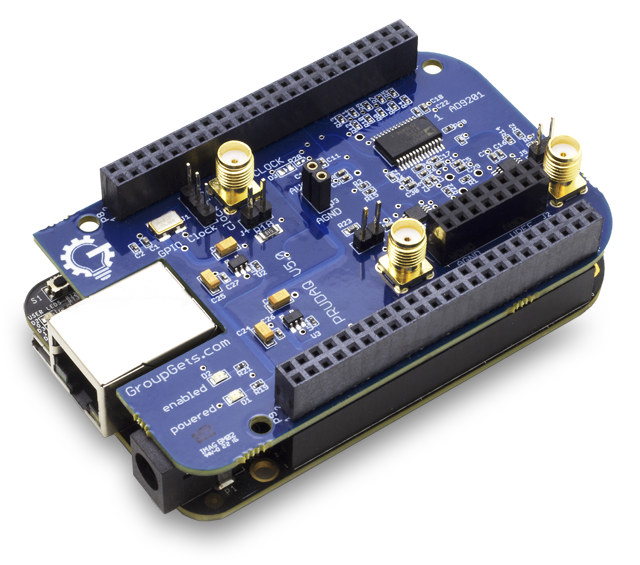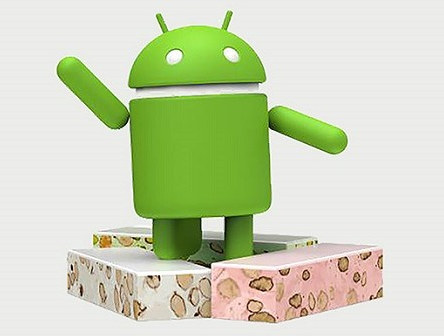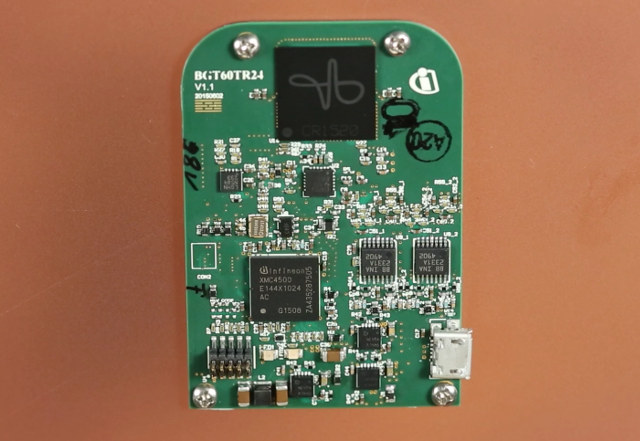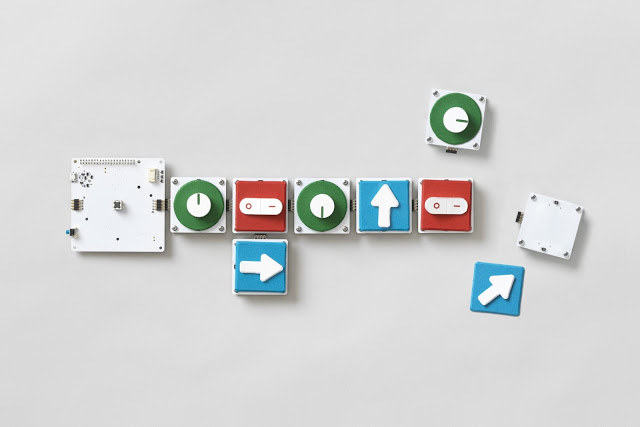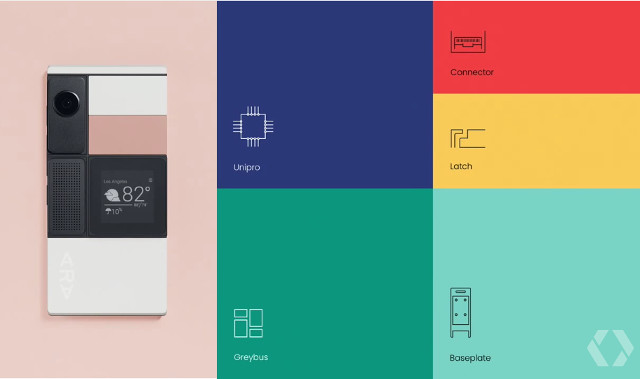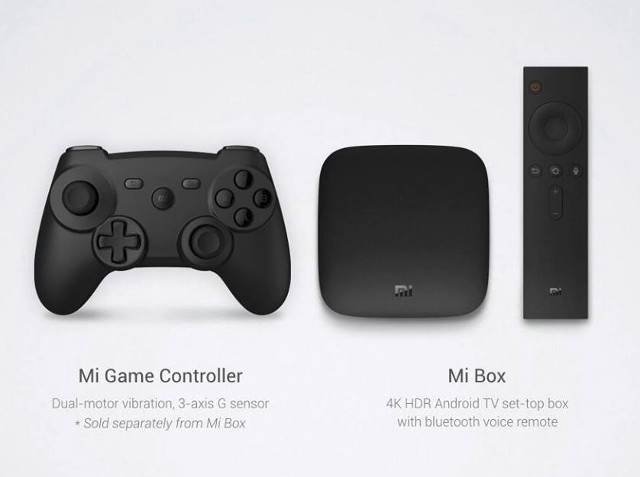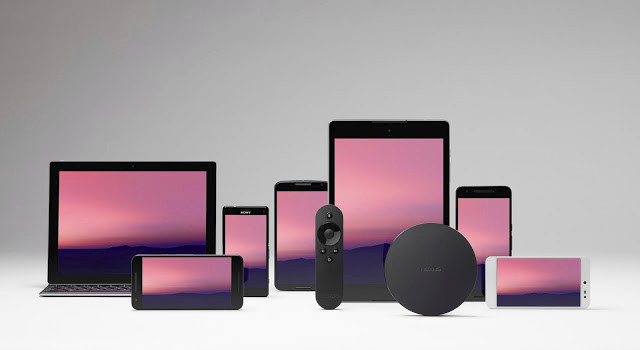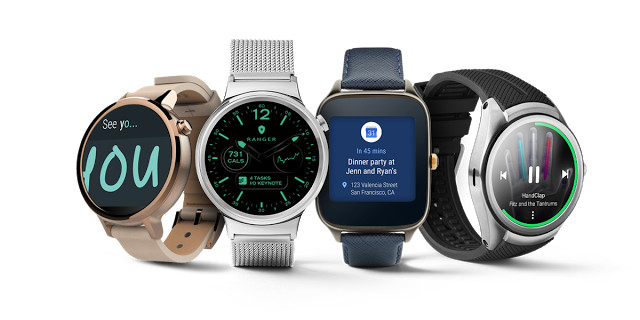Engineers at Google Research wanted to measure the strength of a carrier signals without having to use a bulky oscilloscope or DAQ (Data Acquisition) system, so they looked into several makers boards to achieve this task, eventually decided to go with BeagleBone Black / Green, and created their own PRUDAQ cape capable of sampling 40 million samples per second, and open source it all. PRUDAQ cape specifications: Dual-channel simultaneously-sampled 10-bit ADC (Analog Devices AD9201) Up to 20MSPS per channel (40MSPS total) theoretical 0-2V input voltage range (DC coupled) 4:1 analog switches in front of each channel provide a total of 8 single-ended analog inputs. (See here for differential input) SMA jacks for direct access to the 2 ADC channels Flexible clock options: External input via SMA jack Internal on-board 10MHz oscillator Programmable clock from BeagleBone GPIO pins Powered via BeagleBone headers – no external power needed Fully exposed BeagleBone headers […]
Android 7.0 is Finally Codenamed Android Nougat, Release Scheduled for this Fall
Despite Nutella clearly having won the popular vote, Google has finally chosen a different name most likely for trademark reasons, and Android 7.0 will be called Android “Nougat“. Since Google had already released several Android N previews, we’ve already known the main changes for some times including better virtual reality support, multi-window support, improved security, faster performance thanks to Vulkan API and new JIT compiler, and so on. Smartphone and tablet manufacturers will release hardware and firmware updates based on Android 7.0 starting this fall, and some TV boxes will likely start to run Android Nougat a little later, probably in 2017 and beyond. Jean-Luc Aufranc (CNXSoft)Jean-Luc started CNX Software in 2010 as a part-time endeavor, before quitting his job as a software engineering manager, and starting to write daily news, and reviews full time later in 2011. www.cnx-software.com
Infineon Showcases the Radar Board used in Google’s Project Soli, and Sense2Go Development Kit (Video)
Google’s Project Soli sensing technology uses a miniature radar to detect touchless gesture interactions, so that you can control devices such as wearables using gestures without having to physical touch the product. The 60 GHz radar technology used in the project has been developed by Infineon, and the company was recently interviewed by Arrow Electronics where they showcased Soli board, as well as another 24 GHz radar development kit called Sense2Go. The Soli board called BGT60TR24 features Infineon XMC4500 ARM Cortex M4 MCU, and a 60 GHz “CRIS20” radar chip designed specially for Project Soli by Infineon, and allowing 20mm resolution, falling to less than one millimeter with Google’s algorithms. The micro USB port will be used for power and programming. This board should be the one included in Project Soli development kit to be shipped to developers this fall. Infineon also have a Sense2Go 24GHz sensor development kit that […]
Raspberry Pi Zero Based Google’s Project Bloks Aims to Teach Programming to Young Children
Visual programming development tools such as Scratch or Blockly are now becoming more popular to introduce school children to programming, and Google Research is now working on bringing the software visual programming concept to physical blocks “programming” though Project Bloks targeting younger children who may not be able to write or read yet. It might also help older children grasping programming concepts faster than when programming by typing on a keyboard. Project Bloks is comprised of three main hardware components connected together: Pucks – Those are the buttons, dials, switches, and other inputs from the project. Pucks have no active electronics, and even a piece of paper with some conductive ink could be a Puck. Base Boards – They read a Puck’s instruction through a capacitive sensor, and forward a Puck’s command to the Brain Board. Each Base Board is also fitted with a haptic motor & LEDs, and can […]
Project Ara Modular Smartphone is Not Dead After All, Just Not Quite as Modular as One Would Wish For
A few weeks ago, one person asked me if Project Ara, Google ATAP project aimed to design a modular phone was still going on. I did not know, but it surely did not seem good with the official website showing a black page at the time, many developers claiming they’ve yet to receive the development kit, a lack of communication, and Google ATAP latest tweet was dated December 2015. That’s until Google I/O, where a project update was given during the event, and the developer kit will be provided in Q4 2016, while a consumer version will be for sale in 2017. That’s the plan at least. If you have 10 minutes, you may want to watch the part of Google I/O 2016 video about Project Ara on YouTube. The developer phone supports up to 6 hot pluggable modules, meaning you can just insert or replace a module, and use […]
Xiaomi Mi Box Comes to the US with Android TV 6.0 Running on Amlogic S905X Processor
Xiaomi Mi Boxes have been available in China for a couple of years, and the only way to ship them to the rest of the world was to purchase via Chinese e-retailers. Xiaomi and Google have now worked together to bring Mi Box with Android TV 6.0, instead of the usual Chinese MIUI TV interface, to the US, and possibly to other countries. Xiaomi Mi Box (US) specifications: SoC – Amlogic S905X-H quad core ARM Cortex-A53 @ up to 2.0GHz with penta-core Mali-450MP GPU @ 750 MHz System Memory – 2GB DDR3 Storage – 8GB eMMC flash Video Output – HDMI 2.0a up to 4K @ 60 Hz with HDCP 2.2 and CEC support Audio Output – HDMI, optical S/PDIF and 3.5mm audio jack Video Codecs – VP9 Profile-2 & H.265 MP-10 up to 4K @ 60 fps, H.264 AVC up to 4K @ 30 fps, H.264 MVC up to […]
Android N Developer Preview 3 Adds VR Support, Instant Apps, and Sustainable Performance Mode
Google has also unveiled the third Android N Developer Preview at Google I/O 2016, and the first “beta quality” release, available on Nexus 6, 9, 5X, 6P, Nexus Player, Pixel C, and Android One as a “seamless updates” if you opt-in to the Android Beta Program in order to get an over-the-air update with the very latest firmware. Google wants Android N to be faster, safer and more productive. The first two previews addressed performance with a new JIT compiler and Vulkan 3D graphics API support, productivity with multi-window support and direct reply from notifications, as well as security thanks to seamless updates bringing the latest security patchsets to your phones in a timely manner. The third preview brings fixes, and some interesting new features: VR Mode in Android – Google has modified and augmented the Android stack in N to reduce lag between sensor data readings (e.g. head motion) […]
Android Wear 2.0 Developer Preview Release
Google I/O 2016 has started, and among several announcements, Google released Android Wear 2.0 develop preview which according to the company is the “most significant update” since the launch of Android Wear two years ago. Some noticeable changes include: Standalone apps – Android Wear apps can now access the Internet directly over Bluetooth, Wi-Fi, or cellular, without relying on a paired smartphone or tablet. New system UI – New notification design and app launcher, as well as a new watch face picker. Material design for wearables Keyboard and handwriting input methods added Google Fit platform – Improvements to the Google Fit platform make it easier to app developers to use fitness data and detect activity. Android N Support – Data Saver, Java 8 Lambda support, emojis, etc… A new Complication API has also been added to display small pieces of information directly on the watch face. Preview images for LGE Watch […]


